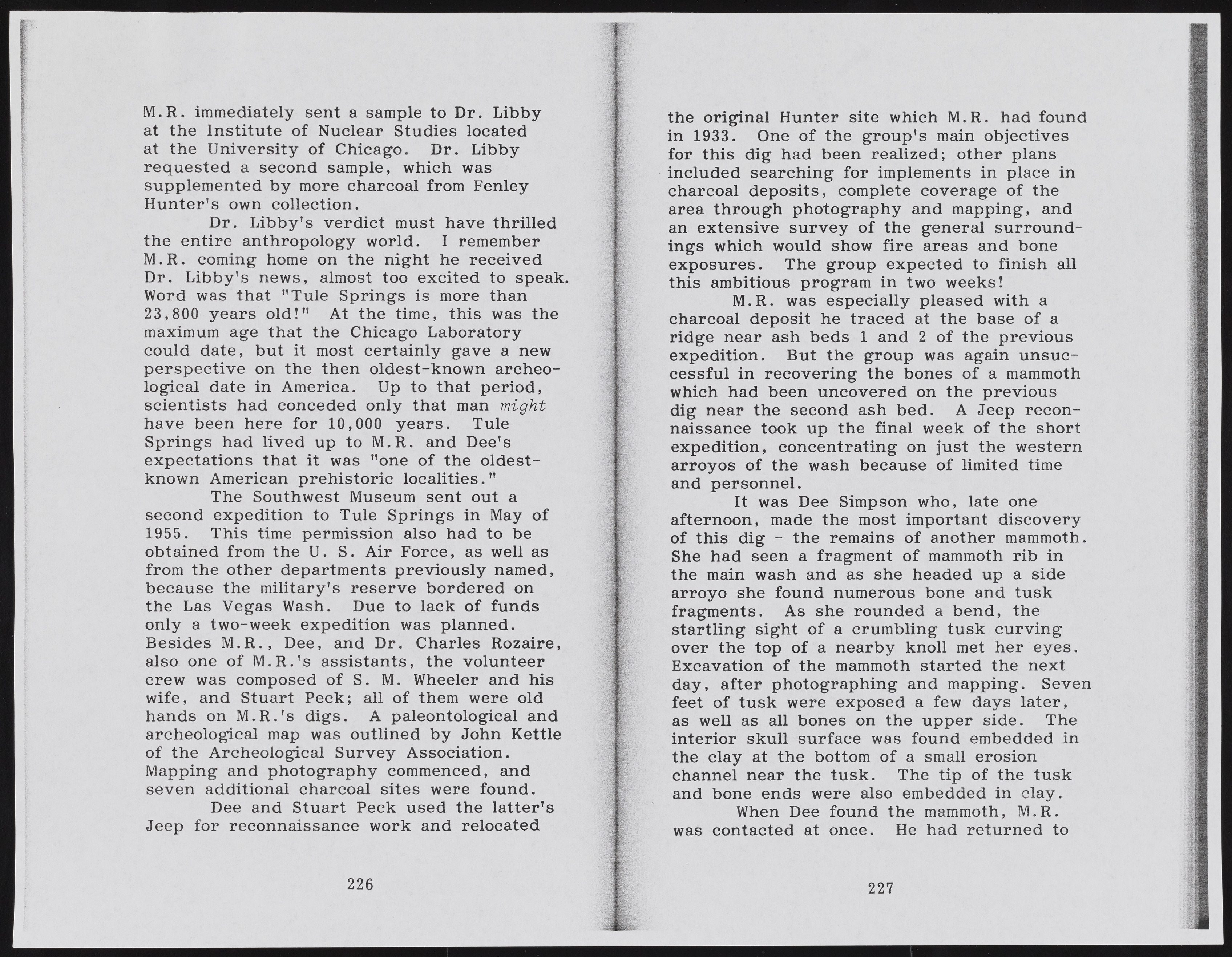Copyright & Fair-use Agreement
UNLV Special Collections provides copies of materials to facilitate private study, scholarship, or research. Material not in the public domain may be used according to fair use of copyrighted materials as defined by copyright law. Please cite us.
Please note that UNLV may not own the copyright to these materials and cannot provide permission to publish or distribute materials when UNLV is not the copyright holder. The user is solely responsible for determining the copyright status of materials and obtaining permission to use material from the copyright holder and for determining whether any permissions relating to any other rights are necessary for the intended use, and for obtaining all required permissions beyond that allowed by fair use.
Read more about our reproduction and use policy.
I agree.Information
Digital ID
Permalink
Details
More Info
Rights
Digital Provenance
Publisher
Transcription
M. R . immediately sent a sample to D r. Libby at the Institute o f Nuclear Studies located at the U niversity o f Chicago. Dr. Libby requested a second sample, which was supplemented by more charcoal from Fenley Hunter's own collection. Dr. Libby's verdict must have thrilled the entire anthropology world. I remember M .R. coming home on the night he received Dr. Libby's news, almost too excited to speak. Word was that "Tule Springs is more than 23,800 years o ld !" At the time, this was the maximum age that the Chicago Laboratory could date, but it most certainly gave a new perspective on the then oldest-known archeological date in America. Up to that period, scientists had conceded only that man might have been here for 10,000 years. Tule Springs had lived up to M.R. and Dee's expectations that it was "one o f the oldest-known American prehistoric localities." The Southwest Museum sent out a second expedition to Tule Springs in May of 1955. This time permission also had to be obtained from the U. S. A ir Force, as well as from the other departments previously named, because the military's reserve bordered on the Las Vegas Wash. Due to lack o f funds only a two-week expedition was planned. Besides M .R ., Dee, and Dr. Charles Rozaire, also one o f M .R .'s assistants, the volunteer crew was composed of S. M. Wheeler and his wife, and Stuart Peck; all of them were old hands on M .R .'s digs. A paleontological and archeological map was outlined by John Kettle o f the Archeological Survey Association. Mapping and photography commenced, and seven additional charcoal sites were found. Dee and Stuart Peck used the latter's Jeep for reconnaissance work and relocated 226 the original Hunter site which M.R. had found in 1933. One o f the group's main objectives for this dig had been realized; other plans included searching for implements in place in charcoal deposits, complete coverage of the area through photography and mapping, and an extensive survey o f the general surroundings which would show fire areas and bone exposures. The group expected to finish all this ambitious program in two weeks! M.R. was especially pleased with a charcoal deposit he traced at the base of a ridge near ash beds 1 and 2 of the previous expedition. But the group was again unsuccessful in recoverin g the bones of a mammoth which had been uncovered on the previous dig near the second ash bed. A Jeep reconnaissance took up the final week of the short expedition, concentrating on just the western arroyos o f the wash because o f limited time and personnel. It was Dee Simpson who, late one afternoon, made the most important discovery of this dig - the remains of another mammoth. She had seen a fragment o f mammoth rib in the main wash and as she headed up a side arroyo she found numerous bone and tusk fragments. As she rounded a bend, the startling sight o f a crumbling tusk curving over the top o f a nearby knoll met her eyes. Excavation o f the mammoth started the next day, after photographing and mapping. Seven feet o f tusk were exposed a few days later, as well as all bones on the upper side. The interior skull surface was found embedded in the clay at the bottom o f a small erosion channel near the tusk. The tip of the tusk and bone ends were also embedded in clay. When Dee found the mammoth, M.R. was contacted at once. He had returned to 227

